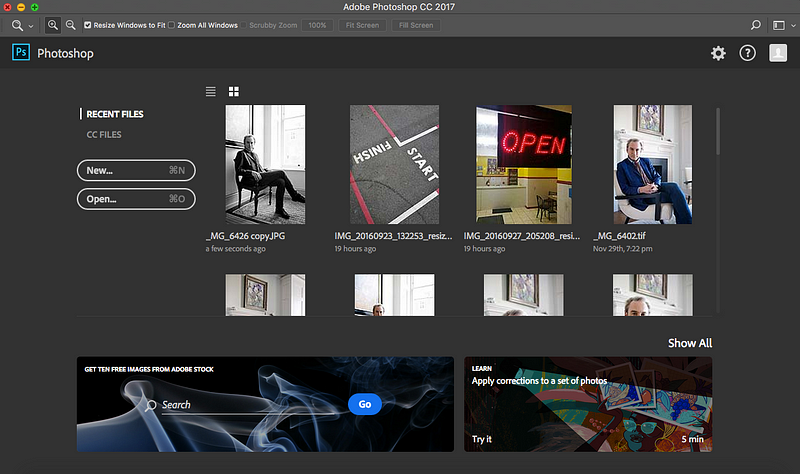
Post-Production Should Be In The Past
A few months ago I judged a photography competition that led to me writing this article. I judged over 300 images online covering a wide range of approaches, subject matter and aesthetics but one particular issue shouted out to me loud and clear and it was that of post-production, of Photoshop, of manipulation.
It would be naive and foolish to ignore the importance of post production techniques to many photographers as a crucial tool in creating their final image (just don’t ask Steve McCurry about it!) in the digital age. It would also be naive to not accept the seductive nature of post-production; when it gets you in it’s grips it can be very hard to escape from or deny the possibilities it offers you. Photoshop can appear like a dealer with a well stock pharmaceutical cabinet.
I am not naive! I have been involved with professional photography long enough to see far too many badly cross-processed images from the analogue days and hyper colour HDR panaramas from the early days of digital alongside all manner of over produced images.
In short when it comes to looking at over done post-production I am no virgin. Even so it still amazes me how often landscape images in particular are completely destroyed by an over enthusiastic adoption of every tool a Photoshop plug-in and palette can offer. But it was not over produced landscape images that has led me to this point of writing.
It was the portrait images that had been submitted to the competition that gave me most concern. Portraits that had forgotten what the purpose of a successful portrait should be. In my eyes, an honest and truthful representation of the person being photographed, proof of a meeting of two minds, proof of an interaction, a dialogue, a conversation, a moment in time. I often say that a successful portrait is the result of a successful conversation, a belief that is the foundation of a journalists interview.
Unfortunately so much of the portraiture I judged (and to be fair see, particularly within a commissioned environment) confirms to none of these approaches or hopeful results. Instead I am repeatedly seeing images that not only demonstrate none of these but also have no interest in ever achieving them. To often I am seeing portrait images created in the moment purely as a basis, a raw material for the art of post-production, to then be used to create images that suit the photographers Photoshop based ‘style’.
I recently saw a conversation on Facebook focused on the fact that many ‘photographers’ are now using post-production as an area in which to ‘focus’ their images. This seems to me to sit comfortably with my belief that some (perhaps too many) photographers are seeing the initial digital capture as nothing more than that. A process of capturing digital information which they will then manipulate to create the image they wish the image to be, with no reference to the person that they met and photographed.
I may be considered by some as being ‘old-fashioned’ in believing that it is important to get things right ‘in camera’ in the moment but that to me seems to be the true essence of portrait photography. I have no issue with post production as a process but I do when that process leads, dictates and dominates the process of photography. This seems to be a mistake that too many portrait photographers are making. It is an even bigger mistake to base a career on that post production technique to create a ‘style’ upon which clients may commission you.
I have been involved with photography long enough to see ‘styles’ come and ‘styles’ go. Approaches to portraiture also change, as the years pass but the desire to honestly document a person is intrinsic to the true photographers practice and it is that desire that never dates.
Grant Scott is the founder/curator of United Nations of Photography, a Senior Lecturer in Editorial and Advertising Photography at the University of Gloucestershire, a working photographer, and the author of Professional Photography: The New Global Landscape Explained (Focal Press 2014) and The Essential Student Guide to Professional Photography(Focal Press 2015).
You can explore images created through photosketching by following #photosketching on Instagram. You can follow Grant on Twitter and on Instagram. See his work at www.grantscott.com.
Images and text © Grant Scott 2016